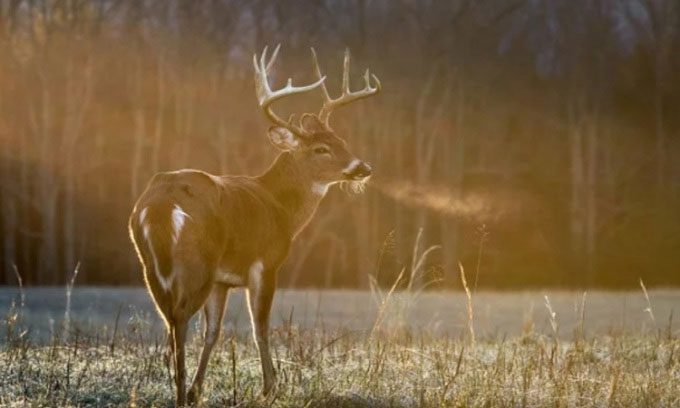A team of environmental researchers has estimated the biomass of all wild mammals and discovered that humans weigh significantly more than them.
The research team, led by Ron Milo at the Weizmann Institute of Science in Rehovot, Israel, is working to identify a metric that can be used to monitor global conservation efforts, as reported by IFL Science on March 10. “Estimating the number of individuals is very challenging even for a single species due to issues such as detectability, year-to-year and seasonal fluctuations, and a lack of standardization in measurement methods, especially for species with small bodies,” the research team stated.

The white-tailed deer, common in North America, has the highest biomass among land mammals. (Photo: Scientific American)
Quantifying the biomass of all mammals allows researchers to compare species with vastly different body sizes. Thus, biomass serves as a supplementary factor to metrics regarding species diversity and richness, potentially acting as an indicator of the abundance of wild mammals on a global scale, providing visual data for conservation efforts.
Initially, Milo and his colleagues gathered available estimates of specific species’ populations. They found estimates for 392 terrestrial mammals, which represented about 6% of the total number of wild mammals living on land. To estimate for other species, the research team utilized machine learning. For each terrestrial wild mammal, they also studied the combination of characteristics that influence the abundance of animals. Based on this, Milo and his colleagues developed a machine learning model capable of inferring global populations for 94% of the remaining species.
This method provided estimates for 4,805 mammal species, although this number is still lower than the approximately 6,400 terrestrial mammal species alive today, as the research team did not include animals with extremely scarce data. Due to their rarity, they believed the impact on total biomass was negligible. Milo’s team calculated the biomass of all wild mammals to be around 22 million tons, distributed unevenly, with 40% of the total biomass concentrated in just 10 species.
The white-tailed deer has the highest biomass compared to any species (excluding humans), with 2.7 million tons distributed across 45 million individuals. The second place is held by wild boar (1.9 million tons) and African bush elephants (1.3 million tons). In contrast, humans weigh about 390 million tons, and the weight of all domesticated livestock is even greater (420 million tons).
“While biomass is not a direct indicator of conservation status or human-induced pressure, we believe that the ratio between the biomass of wild animals and livestock provides deeper insights into the increasing impact of humans on the planet,” Milo stated.
The research team hopes to create global population estimates for other species, improving the accuracy of biomass calculations. They published their findings in the journal Proceedings of the National Academy of Sciences.


















































